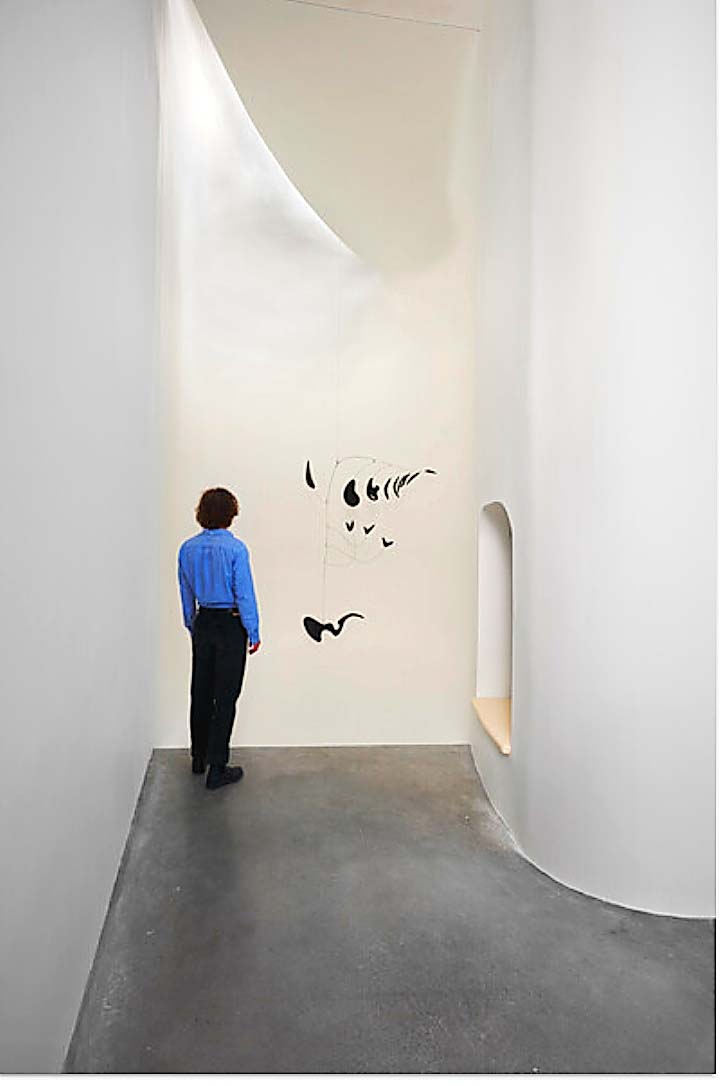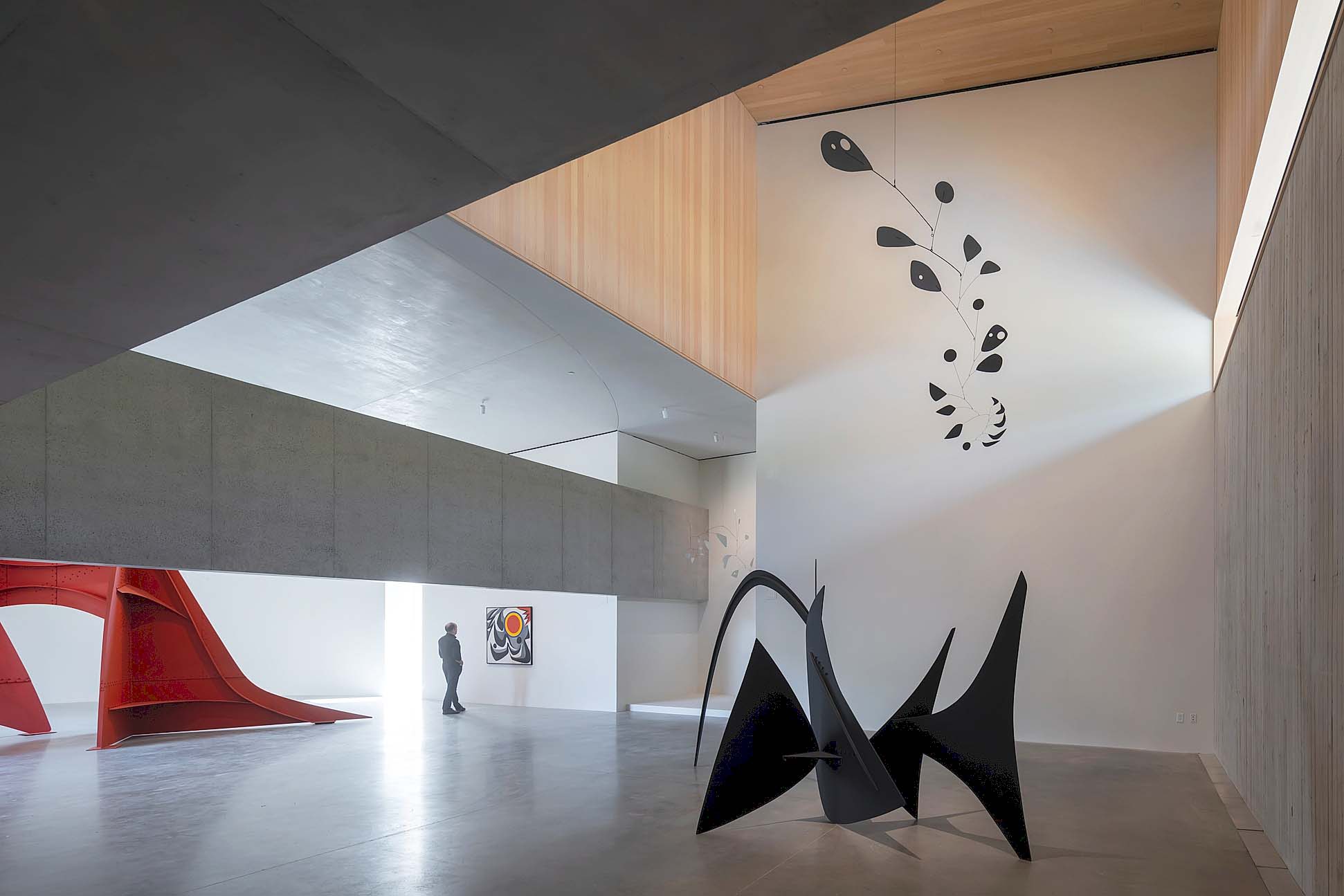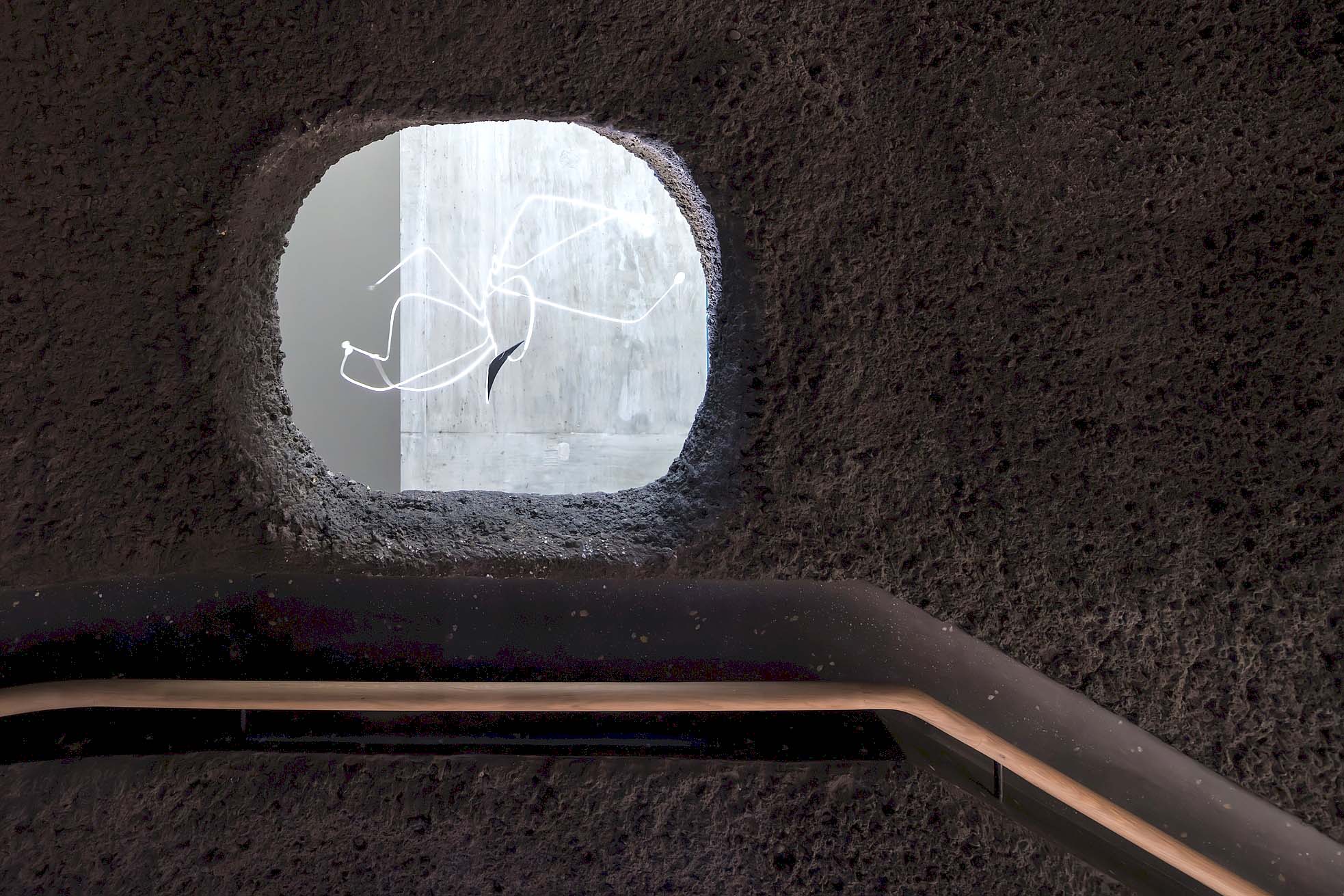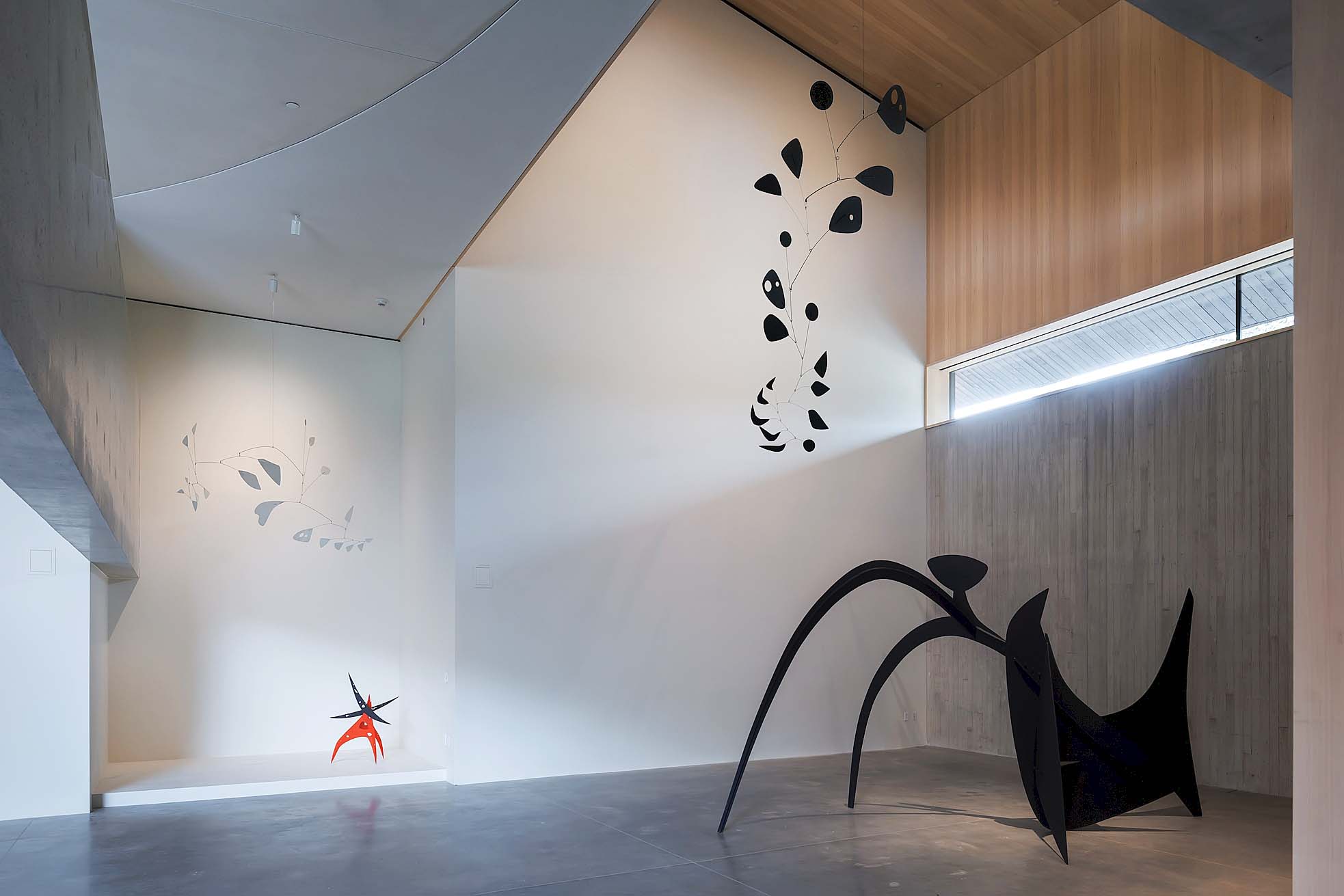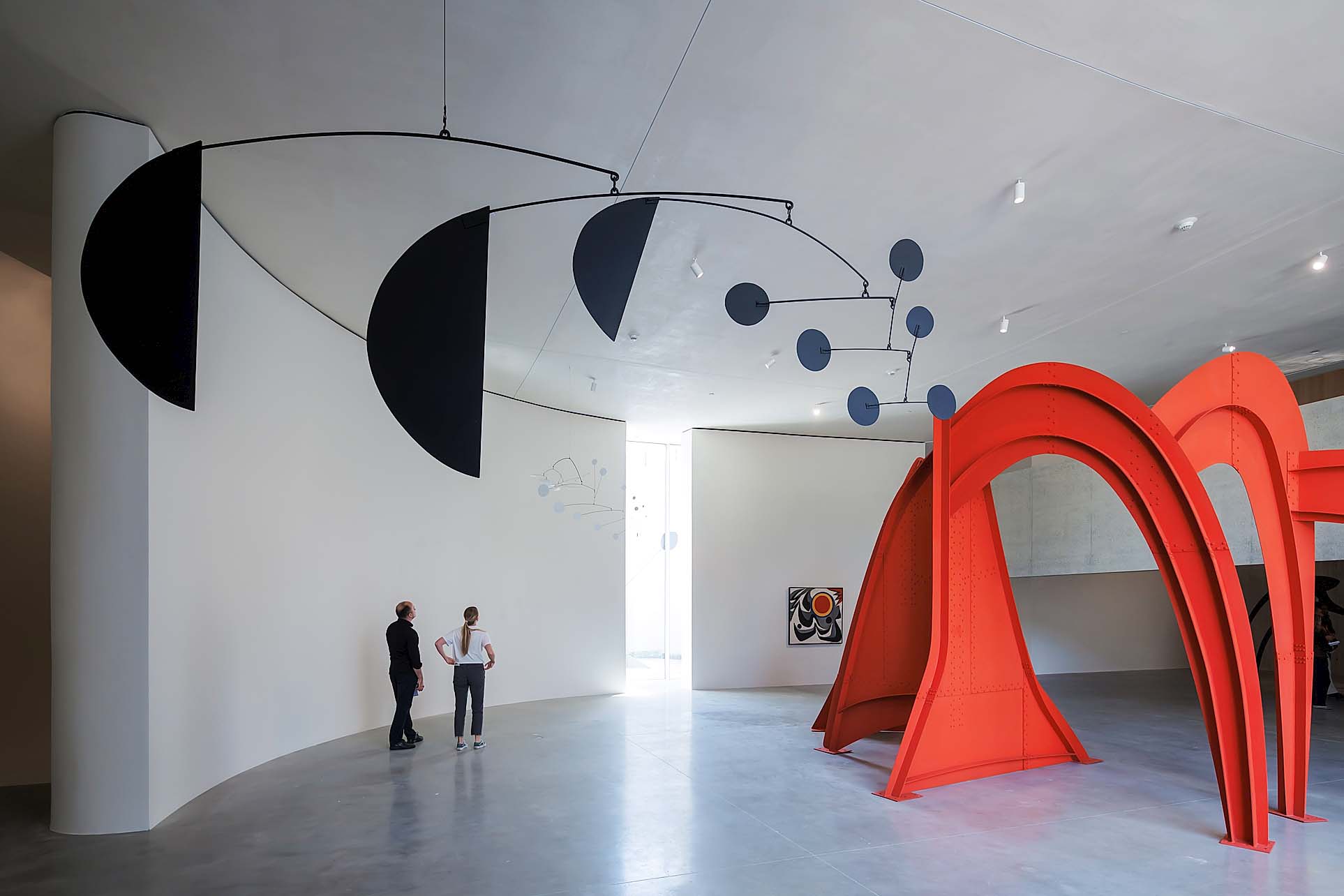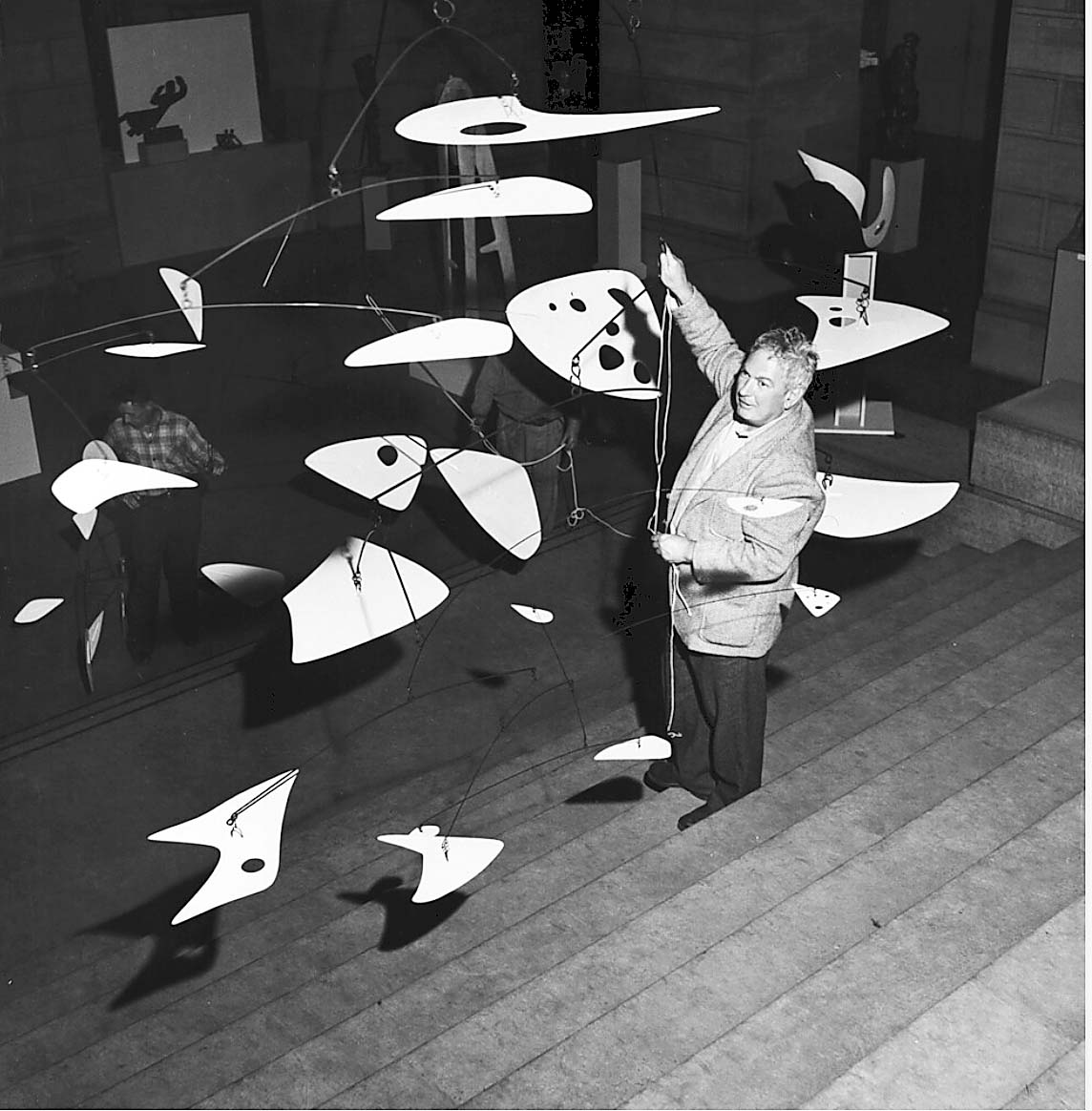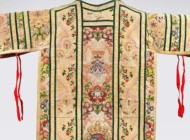Calder Gardens brings a new type of cultural institution to Philadelphia
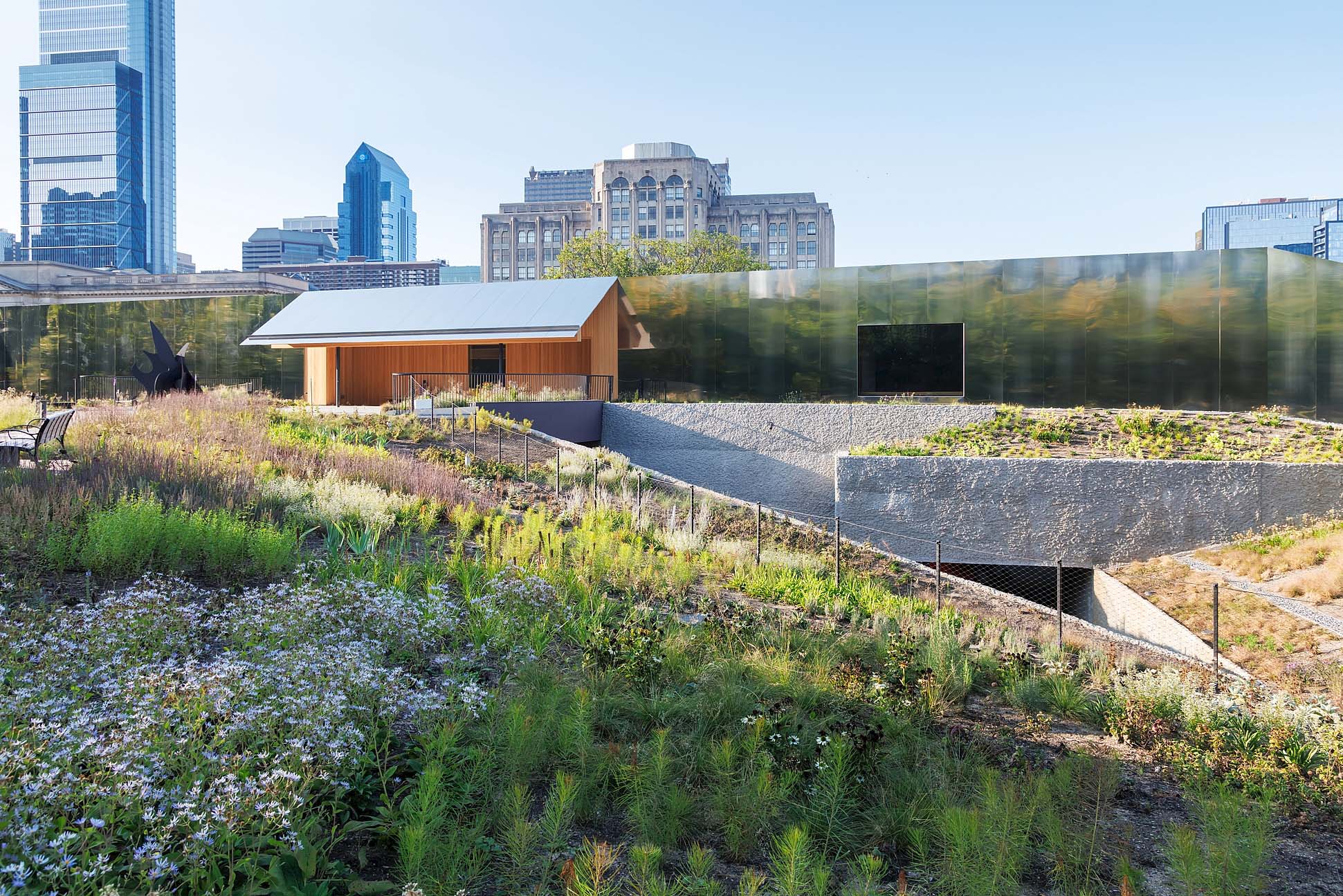
This view details the oasis-like quality of Calder Gardens as an escape from the nearby city. Photograph by Iwan Baan. Artwork by Alexander Calder © 2025 Calder Foundation, New York / Artists Rights Society (ARS), New York City.
By Andrea Valluzzo
PHILADELPHIA — To say that Philadelphia is a cultural powerhouse is an understatement. The Champs-Élysées-style Benjamin Franklin Parkway that starts at City Hall already houses esteemed institutions such as the Philadelphia Museum of Art, the Barnes Foundation and the Franklin Institute. Its newest addition is something novel altogether and, like the work of its namesake, not easy to classify.
Calder Gardens, which opened its doors September 21, is a new type of cultural venue featuring the artworks of Alexander Calder sited in harmony with nature and architecture. More than a museum or exhibition space, it’s a place where art and nature meet. Rather than having curator-dictated wall text guiding visitors’ impressions or telling a story about Calder’s development, viewers are free to interpret what they see. Aptly, the Gardens’ slogan is “Open to Interpretation.”
Juana Berrío, the Marsha Perelman senior director of Programs at Calder Gardens, said there will be a rotating selection of masterpieces by Calder on view both indoors and outdoors in this space.
“It’s going to be a space that invites introspection,” she said, noting that visitors can hopefully experience and engage with the space with their mind and body.
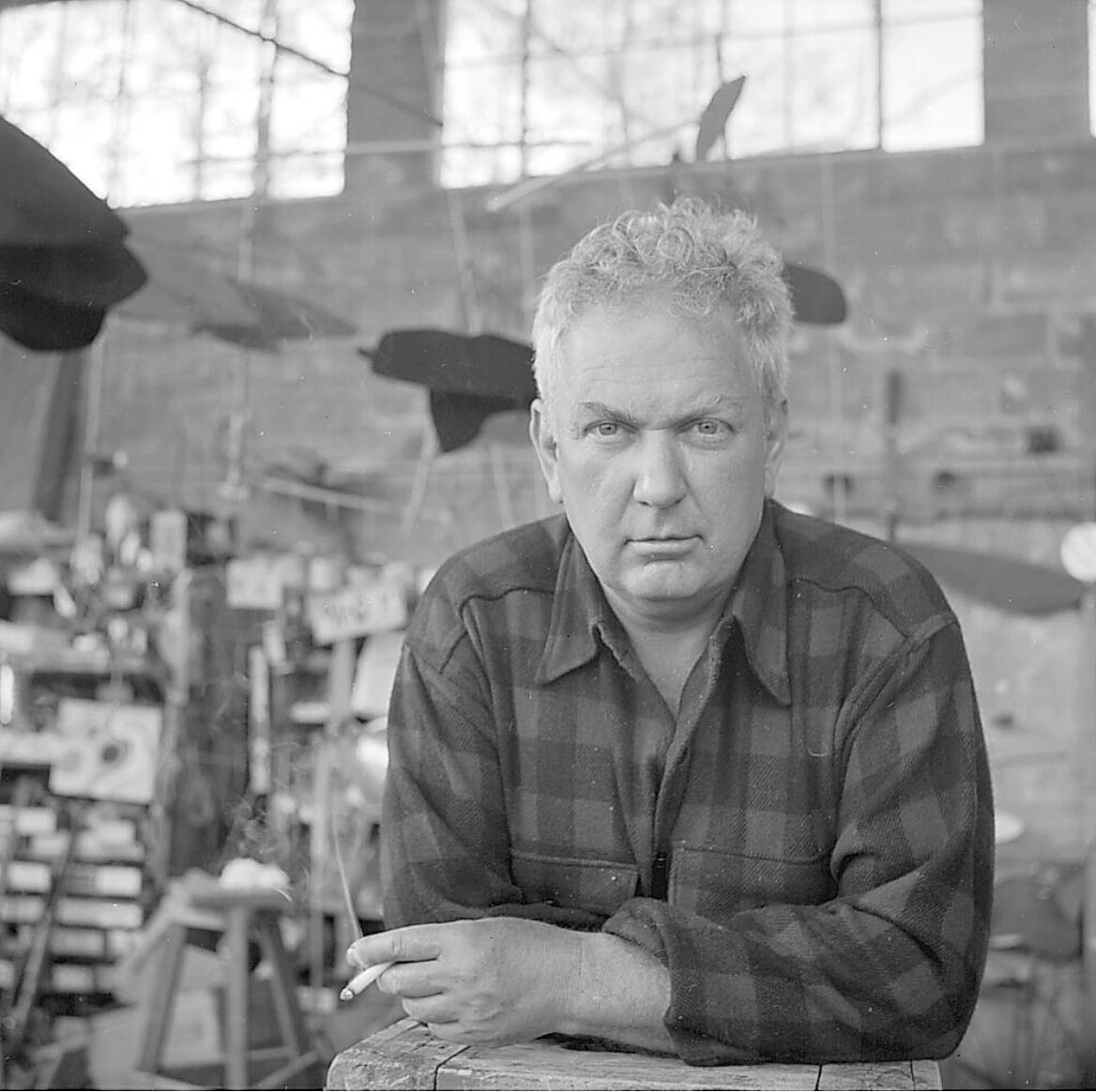
Calder in his Roxbury studio, 1941. Photo by Herbert Matter. © 2025 Calder Foundation, New York / Artists Rights Society (ARS), New York City.
The oasis-like feeling of the nearly two-acre property was meticulously designed so the art exists in sync with the changing landscape around it year-round as well as the architecture. The 18,000 square-foot building was imagined by the Pritzker Prize-winning design practice Herzog & de Meuron, while the gardens were planned by renowned Dutch landscape designer Piet Oudolf.
The building itself has a gentle slope, in harmony with its hillside location. The architects echoed Calder’s bold style with a building that has a shimmering metal-clad façade on the north side while its south side is more subdued, with a wood façade, inspired in part by Calder’s Roxbury, Conn., farmhouse.
Inside the building, where most of the artworks are displayed, are bright galleries filled with natural light and architectural niches that feel very thought out yet intuitive. Native and flowering species add to the effect of smooth transitions from one space to another.
Artworks are placed with plenty of room around them to allow viewers to explore them from different angles and the negative space around each was absolutely part of the design.
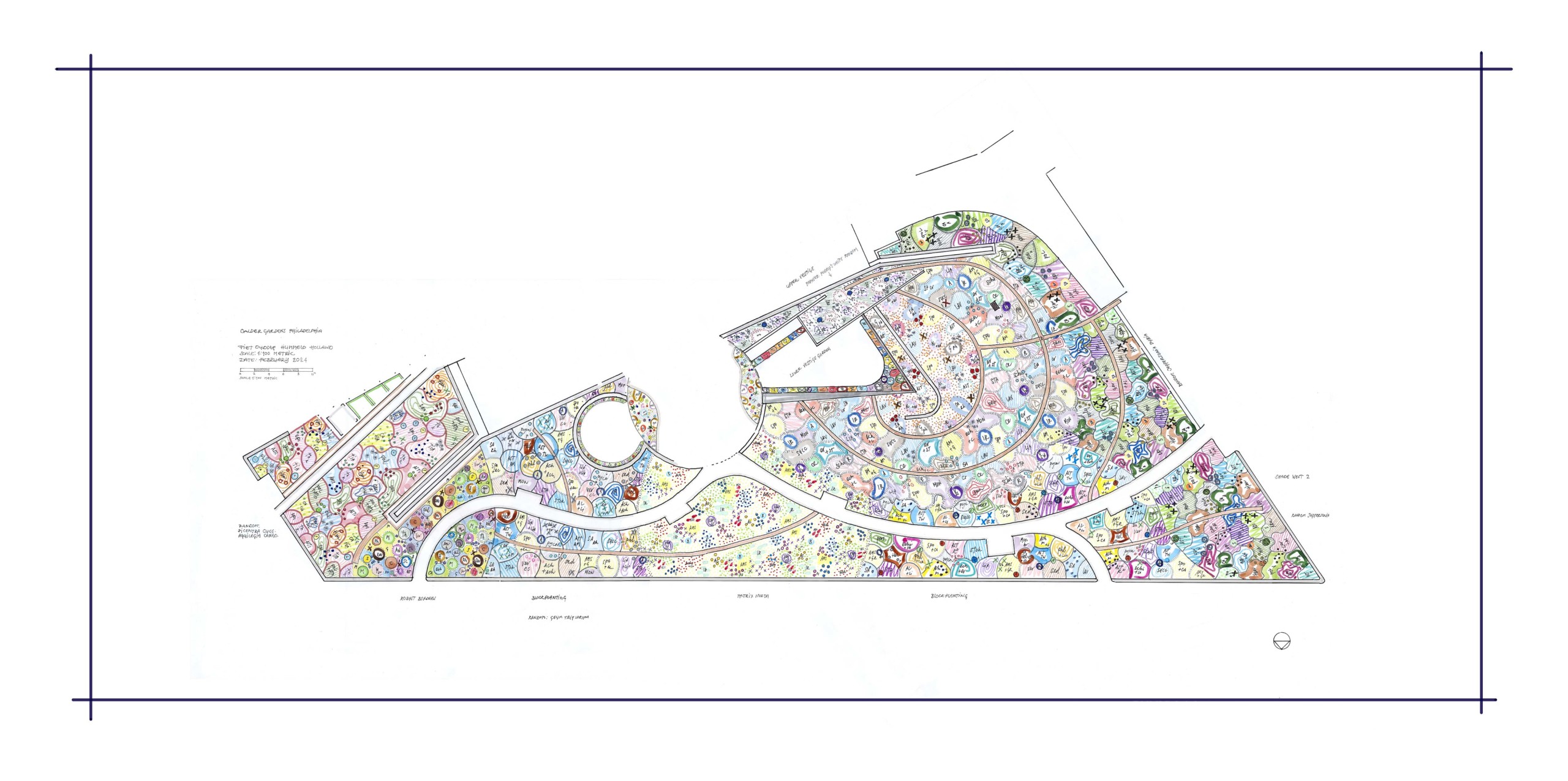
Calder Gardens drawing by Piet Oudolf. This drawing is Oudolf’s total planting design overview for the Calder Gardens site. It shows the planting concepts for different areas of the landscape and their connections to each other. Calder Gardens™ and the Calder Gardens logo™ © are the intellectual property of Calder Foundation, New York City.
“The artworks are going to inform the space, and I think that is something important to take into account that the space was conceived to be in dialogue with the artworks,” Berrío added.
Visitors will find some of Calder’s best known mobiles, stabiles, sculptures and paintings, but likely will also be surprised by what they see and experience.
Sandy Rower, president of the Calder Foundation, chair of the Calder Gardens Curatorial Committee, and Calder’s grandson, described Calder Gardens as an entirely new type of cultural institution focused on nurturing introspection and personal growth through the art and ideas of his grandfather.
“Curatorial research and art history are not a part of Calder Gardens,” he said. “Calder Gardens is just you being with a work of art. A mobile might be engaged with its environment, it might be reacting to your presence, which often happens with Calder’s mobiles — your physical body makes a reaction in the work. It’s subtle. In that kind of grace and that moment, all these things unify to create an experience — a personal experience.”
Greeting viewers shortly upon arrival and perfectly situated in harmony with the building and land are colossal works like “The Cock’s Comb” (1960), a painted sheet metal sculpture, which came to the museum from the Whitney Museum of American Art, and an untitled standing mobile from 1954, measuring 156 by 228 by 156 inches, that centers the Sunken Garden.
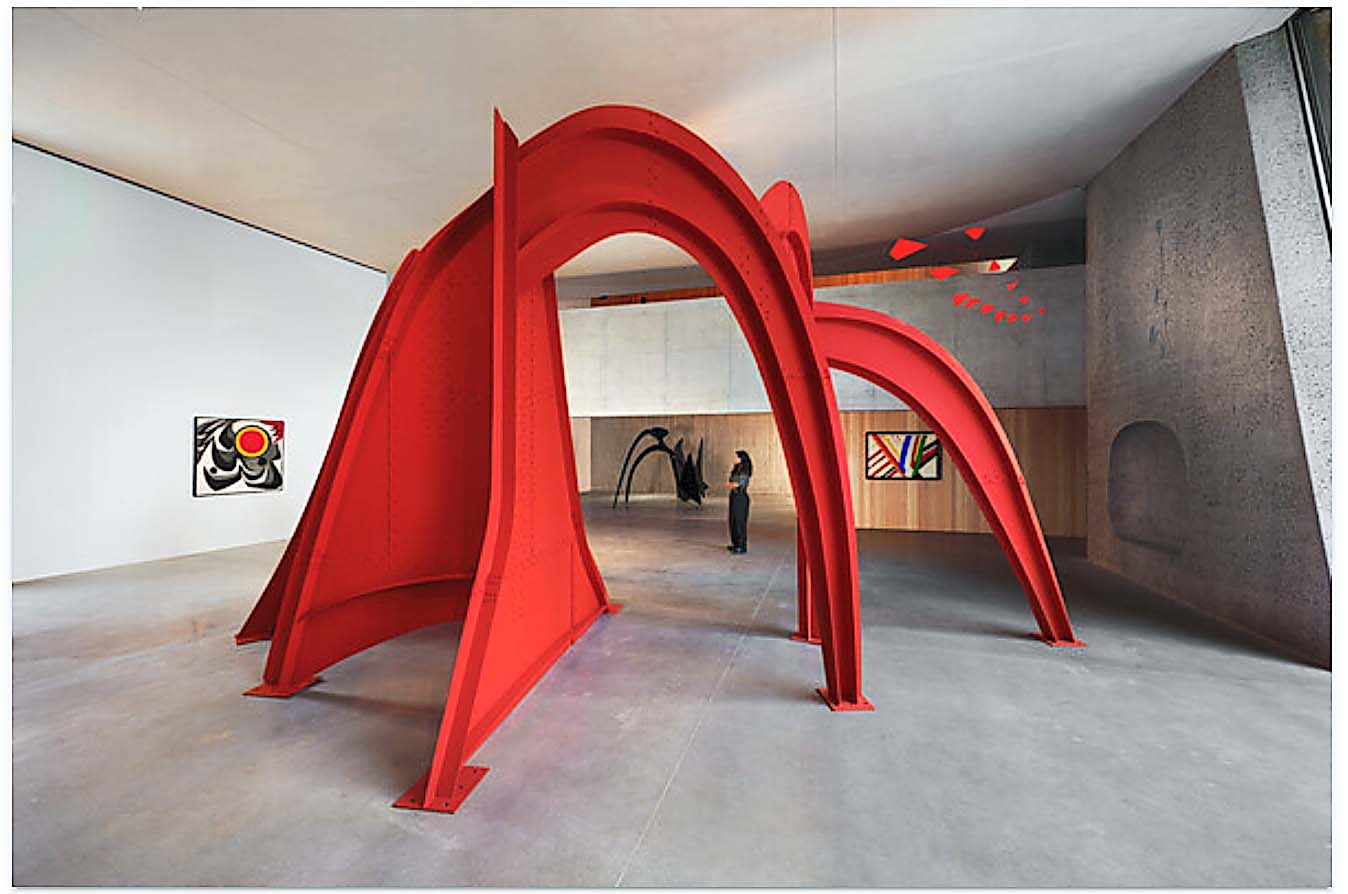
A highlight of the Open Plan Gallery space inside Calder Gardens is Calder’s “Jerusalem Stabile,” 1976, sheet metal, bolts and paint, 141 by 288 by 143 inches. Photograph by Tom Powel Imaging © Calder Gardens. Artwork by Alexander Calder © 2025 Calder Foundation, New York / Artists Rights Society (ARS), New York City.
Inside, visitors will encounter more large-scale artworks like “Jerusalem Stabile II” (1976), a stabile made of sheet metal, bolts and paint that dominates the Open Plan gallery space. There is no shortage of captivating works, including “Myxomatose,” a 101-by-161-inch sheet metal, wire and paint stabile that Calder made in 1953 during a year spent in Aix-en-Provence, when he first began executing massive outdoor sculptures. Equally stunning on a smaller scale are paintings like “The Green Stripe.”
“What is amazing about this project, and what I am really happy about with this whole new institution, is that everything is interconnected and that is at the core of what Calder wanted us to be aware of,” Berrio said. “It’s a garden, so I’m completely in love with the gardens and the possibilities that the gardens propose. It’s not just the gardens you’re going to see from the street, though, but the gardens that you can only access from inside the building.”
The gardens are a work of art in themselves and establish, with seven unique areas, a quiet refuge away from the hustle and bustle of downtown Philadelphia. All can be reached from the entrances on 21st and 22nd Street but feel miles away from its metropolitan locale. About 37,000 perennials, along with 50 species of trees and shrubs, have been planted to invite visitors to linger. There are border and woodland garden areas as well as the Sunken Garden, meadows and the Circle Entrance Garden, which guides one to the front doors.
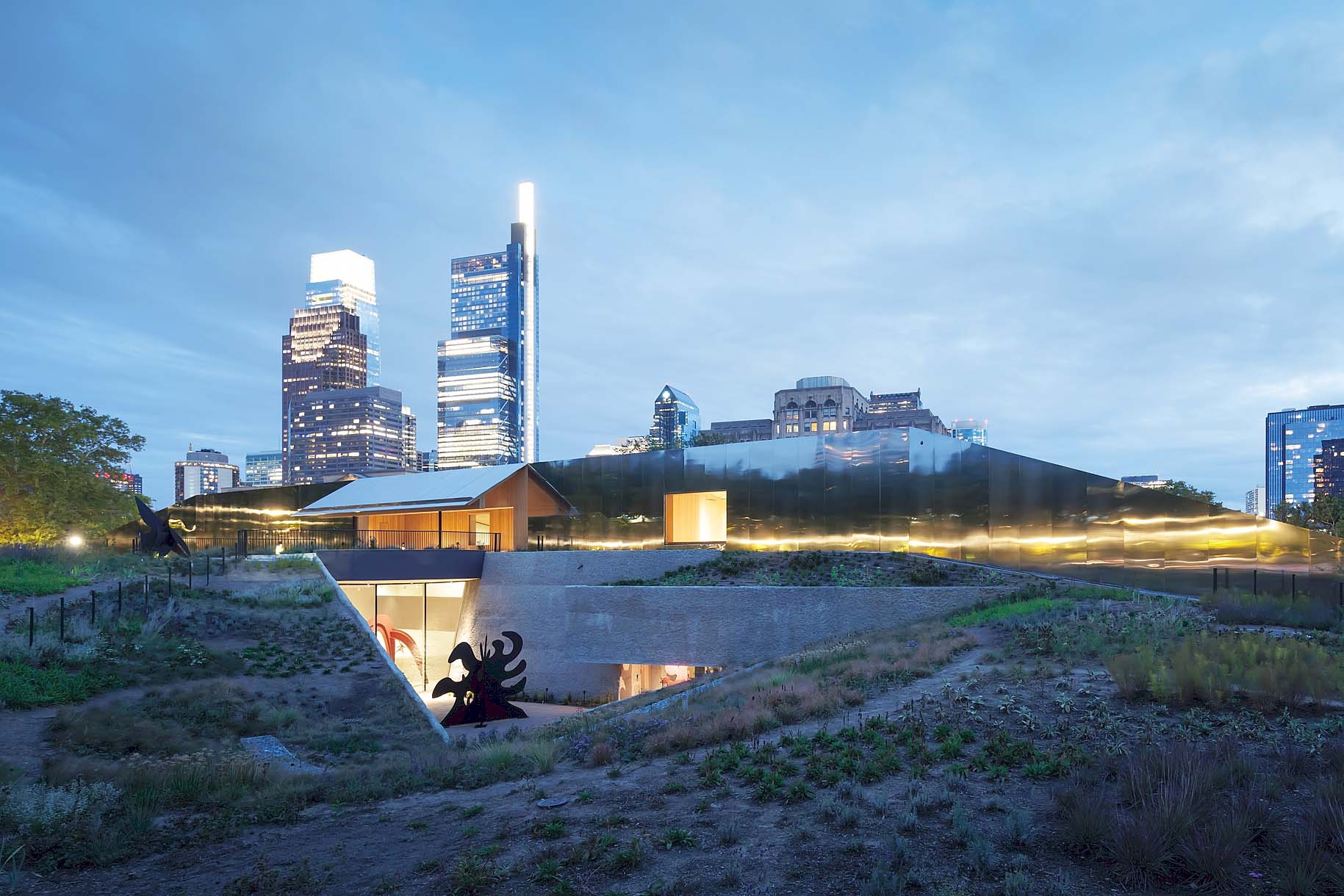
Calder Gardens. Photograph by Iwan Baan. Artwork by Alexander Calder © 2025 Calder Foundation, New York / Artists Rights Society (ARS), New York City.
Calder’s presence is clearly felt throughout the site but Rower is careful to say that it’s not the focus. “Calder Gardens is not about my grandfather, it’s about yourself — and your visit through Piet Oudolf’s gardens and Jacques Herzog’s building,” he said. “Piet’s not making gardens, though. He’s not planting plants. He’s creating something that’s evolving, that’s always alive, like a Calder sculpture. The rooms in Jacques’ incredible building are almost domestic in scale. You feel like you’re walking through a home for Calder. He’s very successful at bringing light through a space and creating intimacy.”
The artworks are transformative, Rower said. A recently installed large stabile, “Polygons on Triangles,” on view in the Curve Gallery, has an interesting relationship to scale, especially indoors. “I think it really holds the space well. At a distance, it feels human scale, but when you get up close, it feels like a large being,” he said.
Programming will also be a cornerstone of Calder Gardens. “With programs, we are going to be activating different ways of thinking about culture,” Berrío explained, saying the gardens will likely draw visitors from all over but she especially hopes Philadelphians come again and again to enjoy this space in their own backyard.
Besides art aficionados, fellow artists will be invited to collaborate and expand Calder’s legacy.
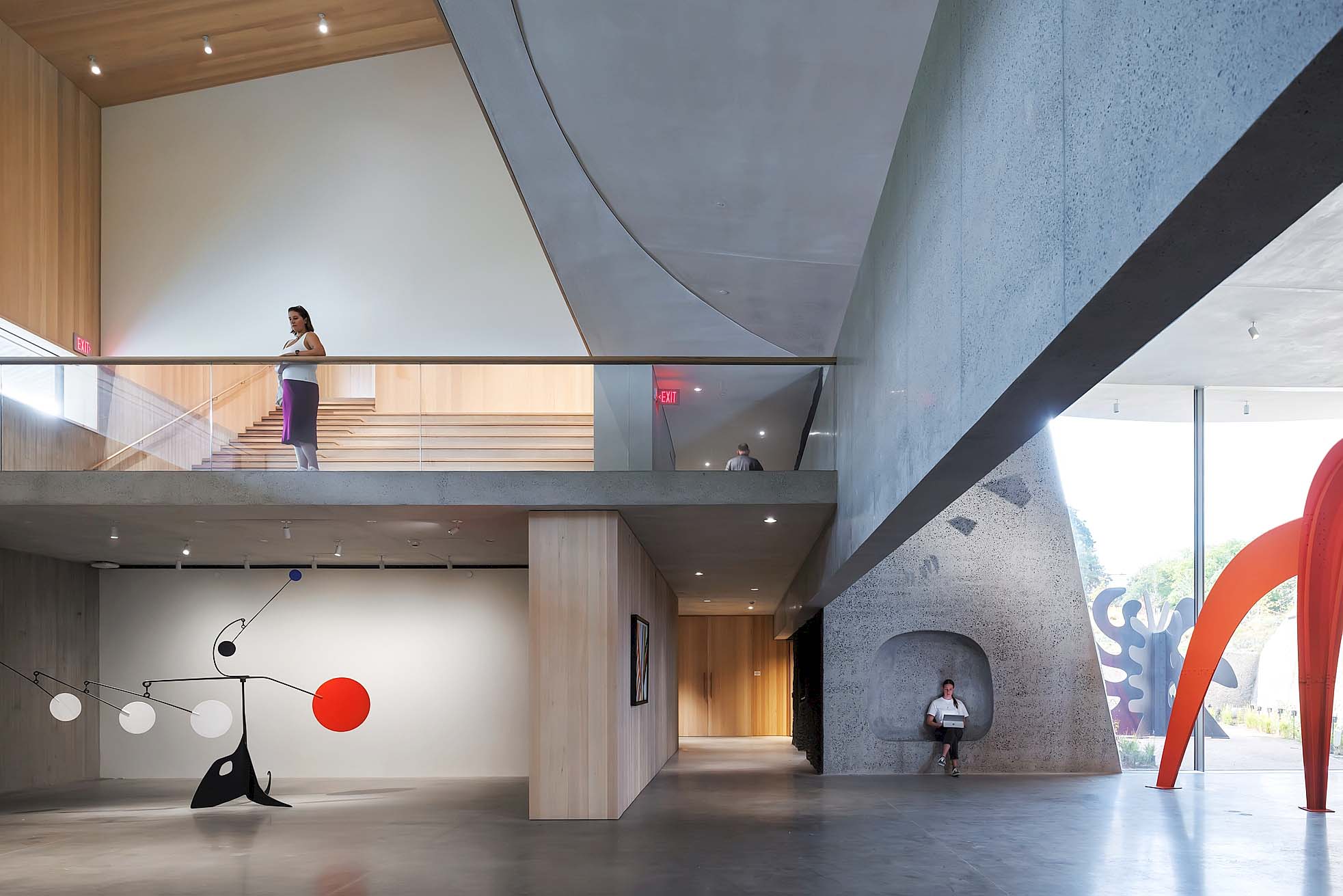
Calder Gardens. Photograph by Iwan Baan. Artwork by Alexander Calder © 2025 Calder Foundation, New York / Artists Rights Society (ARS), New York City.
Calder Gardens has already announced two major newly commissioned projects by artists Cecilia Vicuña and Raven Chacon. Berrío said she is excited to see how artists interpret Calder’s art, whether through movement, sonic experiences or creating their own art. “They are going to be able to expand the legacy of Calder through the present moment,” she said.
The commissions will be part of a multidisciplinary series of programs to position Calder Gardens as a platform for experimentation, collaboration and cultural dialogue. Anticipated upcoming programs include film screenings, performances and wellness activities to offer visitors a multisensory experience. “We are trying to create a space for the mind, the body and the spirit and so that’s going to be really important as well,” Berrío said.
At 1.8 acres, the property is not that large, but the monumental and striking works within certainly create big moments. Moments for viewers to lose themselves in Calder’s art and find themselves connected to his art, to nature and to one other. The artworks move with freedom, creating a sort of choreography that removes one from the busy city. Visitors enter a realm where they can lose the noise and focus on the signal — the intersection of art and nature in a real-time encounter style that was at the heart of Calder’s artistic practice.
“I’m hoping visitors to Calder Gardens will feel like they’ve been in a sanctuary, in a place where a lot of care and intention has been put into the possibility that something a bit mysterious might happen for them personally,” Rower concluded.
Calder Gardens is at 2100 Benjamin Franklin Parkway. For more information, www.caldergardens.org or 215-278-7250.

